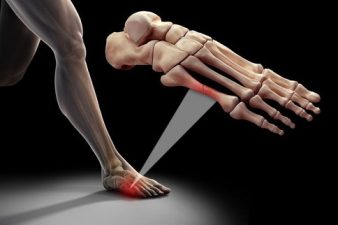Maintaining physical activity with a herniated disc can be challenging, but it’s far from impossible. Carefully chosen exercises can strengthen your body, help manage symptoms, and promote recovery. This blog post will explore different workout options that can safely be pursued with a herniated disc, including full-body workouts, HIIT, leg workouts, swimming, walking, and Pilates.
Full-body Workout with a Herniated Disc
Full-body workouts can be beneficial for those with a herniated disc as they work multiple muscle groups, promoting overall strength and flexibility. The best workout will vary based on your individual condition and symptoms. Some generally safe options include:
- Seated leg lifts: This exercise strengthens your core without putting excessive strain on your spine.
- Hamstring stretch: Keeping your hamstrings flexible can help alleviate lower back pain.
- Partial crunches: This exercise strengthens your back and stomach muscles, providing more support for your spine.
Remember, it’s crucial to consult with a healthcare provider or physical therapist before beginning a new exercise regimen.
HIIT Workouts for a Herniated Disc
High-Intensity Interval Training (HIIT) involves alternating periods of high-intensity exercise with periods of recovery. These workouts can be adapted to be safe for those with a herniated disc, focusing on low-impact exercises and avoiding movements that strain the spine. It’s recommended to consult with a physical therapist to design a HIIT workout suitable for your condition.
Leg Workouts and Herniated Discs
Strengthening the leg muscles can provide better support for your spine, which can help manage herniated disc symptoms. Exercises like gentle leg lifts, seated leg extensions, and hamstring stretches can be beneficial. However, high-impact exercises, such as deep squats, should be avoided as they can strain the back and exacerbate symptoms.
Swimming for a Herniated Disc
Swimming is an excellent low-impact exercise for people with a herniated disc. It strengthens the muscles without putting undue pressure on the spine. Different strokes work various muscle groups, providing a full-body workout. The buoyancy of water also supports the body, reducing stress on the herniated disc.
Walking with a Herniated Disc
Walking is a gentle, low-impact exercise that can be beneficial for those with a herniated disc. It promotes flexibility, strengthens the lower back and leg muscles, and improves circulation. However, if you experience an antalgic gait (a limping pattern often adopted to avoid pain), consult with a healthcare provider. An antalgic gait can signal nerve compression, which might require further evaluation and treatment.
Pilates for Herniated Discs
Pilates can be a great exercise option for those with herniated discs, particularly an L5-S1 herniation. It focuses on core strength, flexibility, and awareness of body mechanics. However, not all Pilates exercises are suitable for people with a herniated disc, so it’s best to work with a Pilates instructor familiar with spinal conditions.
In conclusion, while herniated discs can pose challenges to maintaining an active lifestyle, they don’t have to halt your exercise regimen completely. By choosing safe, effective exercises, listening to your body, and consulting with healthcare professionals, you can create a workout regimen that supports your health, manages symptoms, and contributes to your overall wellbeing.
Chiropractic Treatment for Herniated Discs
The approach of chiropractic treatment for herniated discs is typically holistic and patient-centered, aiming to provide relief without surgical intervention or drugs.
Spinal Manipulation: This is the most well-known chiropractic technique, also called chiropractic adjustment. The chiropractor applies a controlled, sudden force to the affected spinal joint, which may help to align the spine, improve spinal function, and alleviate pain. This technique, when done correctly by a professional, is considered safe but should not be performed if certain contraindications exist, like severe osteoporosis or spinal cancer.
Flexion-Distraction Technique: This is a gentle, non-thrust type of spinal manipulation often used for herniated disc treatment. The chiropractor uses a special table that distracts or stretches the spine, and by using a pumping action on the disc instead of direct force, the pressure on the disc can be reduced, leading to pain relief.
Pelvic Blocking Techniques: These methods involve placing cushioned wedges on the sides of the patient’s pelvis, along with gentle stretches. This can help move the disc away from the nerve, reducing inflammation and pain.
Physical Therapy Modalities: Many chiropractors also employ physical therapy techniques, such as ice and heat therapy, electrical stimulation, or ultrasound to reduce inflammation and muscle spasm associated with herniated discs.
Exercises and Lifestyle Modifications: A chiropractor can provide exercises tailored to the patient’s condition, which can help strengthen the spinal muscles and prevent further injury. They may also offer advice on posture and ergonomics to help prevent disc herniation in the future.











